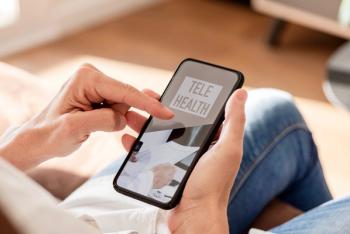
Becoming Friends with Your New EHR System
Here's how medical practices can effectively turn a new EHR system from a stranger to a friend in seven easy steps.
If you've recently purchased an EHR system for your practice, you know the initial investment was not small. You also know that in order for you to see a return sooner than later, your organization must get up to speed as quickly as possible post-implementation.
But, that is challenging for
If your EHR system feels like public enemy number one, here are some ways you can befriend it:
1. Leverage Vendor Knowledge
Any EHR vendor worth their salt will offer training to customers. Sometimes that training is in person, sometimes it's over the phone, and sometimes it will be via online webinars, white papers, and training modules, or even a combination of all these.
Don't try and figure out all of your system's bells and whistles on your own. Your vendor will be able to get you up to speed on things like your system's templates, shortcuts, and triggers.
If you put off onsite training because of cost, understand this type of assistance is much more efficient. Your vendor can observe your practice's workflow as well as the nuances of how you're currently using the system. You get what you pay for. Why struggle for a year and not see a return when, if you spent a little more up front, you'd see a return much more quickly.
2. Use Shortcuts When You Can
We just mentioned shortcuts and triggers. Are you using any of these? Think about all of the repetitive tasks your clinicians perform in the EHR. Shortcuts will allow them to do those same tasks quicker.
For example, most practices treat the same illnesses day after day. To be efficient, pick your top five or 10 things you treat the most (burns, cuts, sore throats and earaches) so you can build efficient templates and improve your workflow.
You may similarly create "triggers" within your EHR that can help your physicians document more quickly. As an example, when a physician says 'review of systems normal,' that single statement, or that one specific click, can trigger a standardized set of language or text that is automatically created into the note on his behalf.
3. Integrate a Portal
A portal can help your practice in a couple of ways. To start, it's going to satisfy the patient engagement requirements in Medicare programs. But it is also going to significantly cut down on the time it takes physicians and staff to document patient information. When a portal is integrated with your EHR and patients use it to enter information such as their history and current medications, this can be seamlessly pulled into your system.
4. Investigate All Your EHR's Features
Many practices overlook the tools built right into their systems, and these tools are there to help you improve your efficiency. For instance, your EHR may have a messaging feature that allows your physicians and other staff to communicate in real time. Calendar options help physicians stay focused on high priority patients and tasks.
5. Consider Other Add-Ons
In a way, you've got to think of your EHR as any other operating system. When you buy a new laptop, it can benefit your work and personal life in many ways. But it's up to you to add the different software programs (Microsoft Office, Adobe, etc.) that you will need at home or at work.
Beyond a portal, you may want to consider other technology add-ons that will help your EHR work for you. For instance, "smart" pens 'write' text on a computer or tablet, which can then be converted to text within the EHR. There is also speech recognition software that will fill in areas of the documentation record as the physician is speaking.
6. Stay Current
Ensure your practice is always aware of any updates and improvements your vendor makes to the system so you'll always use your EHR in the most efficient way possible. Pick one of your "super users" who will regularly review new information and guidance by the vendor and help other staff members get up to speed on any changes.
7. Get the Entire Team Involved
It takes a village to implement an EHR system efficiently.
Make it a priority to get your physicians and staff together to discuss challenges, frustrations, and opportunities for improvement. All of you are working as a team and you've got to approach your workflow and EHR with a team mindset. Ask yourselves and each other how you can get your EHR to play nice; how can you get it to become an efficient member of the team.
Your EHR wants to be your friend; it wants to help you be compliant and improve your workflow, but you must help it help you by using it as efficiently as possible.
Newsletter
Optimize your practice with the Physicians Practice newsletter, offering management pearls, leadership tips, and business strategies tailored for practice administrators and physicians of any specialty.










